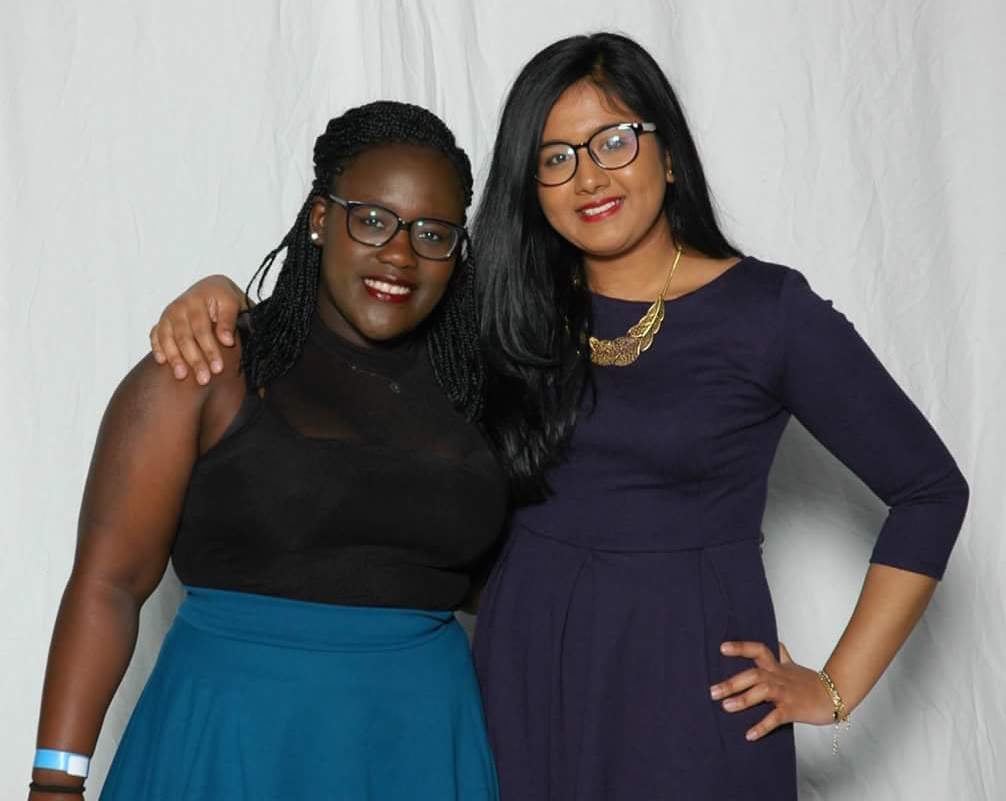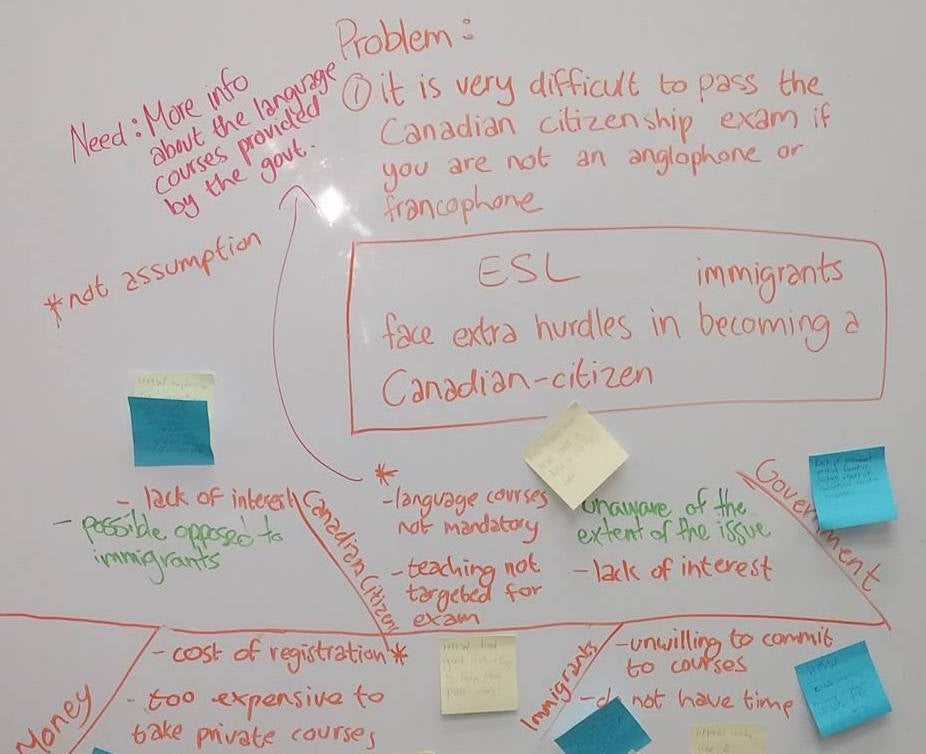
The two, who met in a first-year economics course and instantly hit it off, are both children of immigrant families. Dinojah’s parents were refugees from Sri Lanka, while Sybill’s mother struggled to find adequate employment after moving from Haiti and had to do extensive retraining as her credentials were not accepted in Canada and the U.S.
Both Sybill and Dinojah saw firsthand the struggles of their families and paid attention to the barriers that prevented their parents and other family members from being able to integrate successfully into Canadian life and employment. When the two came across GreenHouse, they thought it might be a good way to learn more about how they might help other immigrants overcome those challenges.
We came into GreenHouse fully expecting to just stay in the background and learn how asocial enterprise works, and we soon found ourselves neck-deep in our project — getting things done much faster than we expected,” says Sybill.
As a Political Science student, Dinojah initially was focused on changing policy, but a more doable idea crystallized during a GreenHouse activity in which students were encouraged to articulate the “value proposition” of what they wanted to accomplish — in 10 words or less.
“Before we did that activity,” says Dinojah,”My idea was very big and broad. When I wrote out my value proposition, it all came together and I realized exactly what I wanted to do.”

The pair, whose social enterprise is called ILEAP (Immigrant Language Employment Acquisition Program), recognized that one of the biggest barriers for immigrants in attaining meaningful jobs was language. While ESL classes for immigrants are available, the current approach is more academic and less conversational than what most immigrants need to be able to successfully obtain and maintain employment.
Last fall, the pair supervised a team of undergraduate students with the guidance of the Centre for Community Based Research, doing two sets of focus groups at immigrant conversation circles, to try to understand what is and isn’t working about the current approach.
This winter, both Dinojah and Sybill are on co-op terms, but both plan to use their placements as a means of researching their ILEAP project. Dinojah is working at the Ontario Legislative Assembly (a job she landed in part because her GreenHouse experience made her uniquely qualified for the position), where she hopes to make connections for the project, while Sybill’s placement at Canadian Tire will offer her an opportunity to find out about why companies do or don’t hire immigrants, and to discover what the barriers are from an employer’s point of view.
Both plan to return to GreenHouse for another term, to further develop their idea into a pilot project. Right now, they are considering a program modeled after the co-op program, with immigrants getting language skill training and work training with a specific company, but the idea is still in its early phases.
“We hope to create a program that will help immigrants develop language skills and find long-lasting employment in fields they are interested in,” says Dinojah. “Hopefully by the time we graduate, we will have figured out what it looks like and will have implemented our program.”
Their immigrant parents have been through a lot and have varied responses to this project. Having had a very difficult experience moving from studying accounting in Sri Lanka to being a welder in Canada, Dinojah’s dad is not sure that the program will work.
Her mother, a biology teacher who has struggled to find stable employment because of her lack of fluency in English, is more optimistic and willing to participate in the ILEAP program.
Sybill’s mother, who now works as a medical technician although she was trained as a personal secretary in Haiti, is delighted with the idea and is glad to see her daughter being part of something that will actually help people, even while she is still a student.
Sybill and Dinojah have seen firsthand the discouraging system where immigrants and refugees need to start all over again, and they have also seen the GreenHouse system where, as Dinojah says,
People are all really invested in helping make your project work and taking the time to make good connections. You can’t find that anywhere else — such really caring people.”